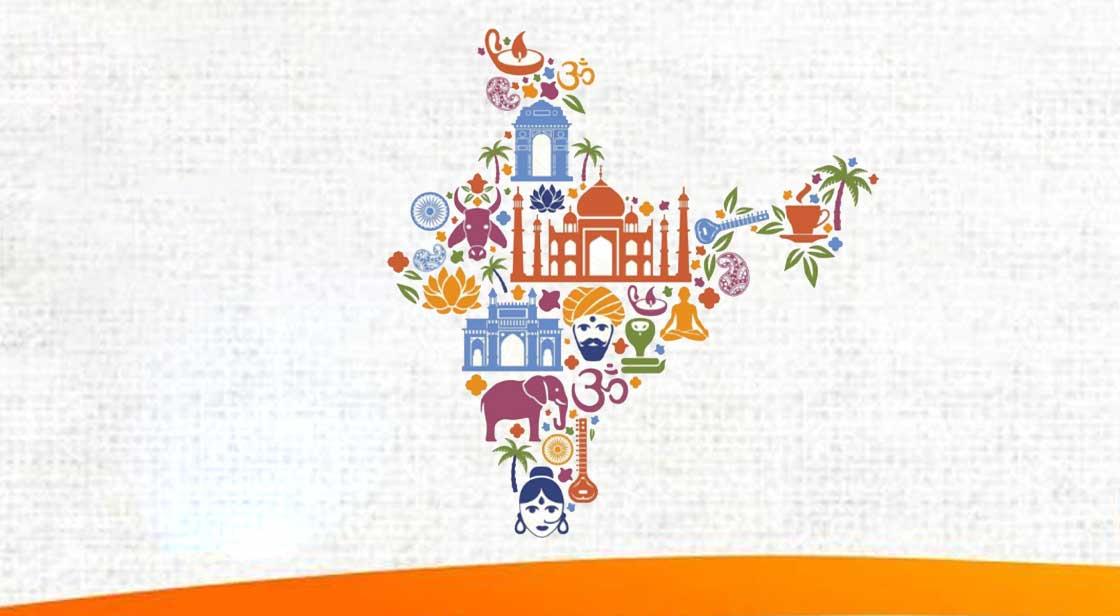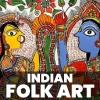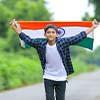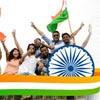India: Our Nation; Our Culture

Blog Post
This year India is celebrating 75th Independence Day. Our India is really incredible in every aspects. the Unity in Diversity, the culture everything has the variety. We are proud to be an Indian. Let's have a look to our amazing varied culture of India. #ThinkWithNiche.
India, we know, isn't born today but India as an area of Southern Asia has been mentioned even within the traditional Hebrew texts. India as a whole was never under the rule of 1 empire and thus the rulers of the Northern and Southern regions were mostly fragmented. India has been conquered by different nations and rulers for many years and each new ruler and empire brought their name to India.
Today, India is that the seventh-largest country and consists of 29 states and 7 union territories. it had been British rule that began within the 18th century that brought India together and ruled all of India. Though, despite the colonial rule, parts of India were still under the Portuguese and thus the Dutch or Princely States. And a touch like with different rulers’ different cultures appearing within the country, India wasn't always called India. India has had a variety of names through varied eras.
India also features a Chinese and Japanese name that's “Tianzhu”. During their travels, they found an area bordered by the Sindhu River. The Persian rule changed the name of Sindhu to Hindu and “Tianzhu” could also be a translation of Hindu.
Olden texts ask India as Nabhivarsha. Nabhi was the son of the one that ruled the entire Earth. As Nabhi ruled India, it came to be mentioned as Nabhivarsha. The Northern region of India is known as Aryavarta. A name that's still employed by the Persians is Hind or Hindustan. India is officially called Bharat or the Republic of India. This name came after the Ruler Bharata. And finally, the name hottest and thus the official name of the country is INDIA. We can see there are many names of our country. Not only names, like this, but India is also additionally a country with many mixtures of cultures. Indian culture, often considered as a mix of several cultures, has been influenced by a history that's several millennia old, beginning with the Indus Valley Civilization. Many elements of Indian culture, like Indian religions, mathematics, philosophy, cuisine, languages, dance, and music have had a profound impact across the Indo-culture, Greater India, and thus the planet.
Religion
Religion has historically influenced Indian society on a political, cultural, and economic level. there is a way of pride associated with the country’s rich religious history because the traditions of Hinduism, Buddhism, Sikhism, and Jainism all emerged out of India. Moreover, a majority of people in India identify as Hindu. Hinduism continues to thrive in modern-day India. Religion affects lifestyle and social interactions among people through the varied Hindu-inspired festivities, artistic works, and temples, festivals. The epics of India “Ramayana” and “Mahabharata”, “Krishna Lila'' can never fade in India. Durga Puja is that the emotion of Bengali people in India. Diwali, Ganesh Chaturthi, and many more celebrations, that are the life and love of India. Islam is that the second most followed religion in India, influencing the country's society, culture, architecture, and originality.
The Muslim community in India has contributed to theological research and thus the establishment of spiritual facilities, institutes, and universities. India also celebrates Eid, with crammed with happiness. Originating in India, Sikhism could also be a monotheistic religion that promotes devotion to a formless God. the religion is centered on a tenet of service, humility, and equality, encouraging its followers to hunt to help those less fortunate or in need. it's normal for Sikhs to provide food to those visiting a gurdwara. Buddhism, Jainism, Christianity is also not excluded from Indian religious culture. All people of India with different religions are called by only one name, “We Are Indian.”
Art
While talking about Indian culture nobody can ignore Indian Art. India is essentially incredible and should hold numerous mixtures of arts. First comes the dances. Dance is an expressive kind of culture. From classical and traditional to folk and tribal, there are various dance forms in India. the foremost popularly recognized classical dance forms are eight, which find themselves steeped during an upscale mythological and religious history and are mentioned within the traditional Hindu text of Natya Shastra. There are Bharat Natyam of Tamil Nadu, Bihu of Assam, Manipuri, Kathak of northern India, Odissi, Kuchipudi of Andhra Pradesh, Kathakali, and Mohiniyattam of Kerala.
Now comes the music. Music has been as integral an area of the socio-religious expressions of cultural values as dance in India. the foremost important classical traditions of music in India are the Hindustani classical tradition which finds a variety within the northern and western parts of the country and thus the Carnatic classical tradition, which is practiced primarily within the southern parts of the country. You can’t ignore any of these rhythms of India, starting from Rabindra Sangeet, Thumri, Dadra, Ghazal, Qawwali, or even the Tamang Selo, the band is additionally equally popular in India.
The theatre, Jatras, is that the emotion of India. From the normal period till now India’s art is world-famous. The earthen design of old temples, Ajanta, Ellora cave paintings, the Rajasthani palaces, forts, our pride Taj Mahal, West Bengal’s Bankura Arts. once we mention these, we don’t get to explain how our India is and what our India is.
Customs and Manners
India could also be a family-oriented country. Family values are a hugely important neighborhood of Indian life. Arranged marriages are quite common, and marriage as thought is taken very seriously, leading to a very low divorce rate. it's normal to determine large, patriarchal families spanning many generations. In India, traditional clothing varies hugely in several parts of the vast country. it's normal to determine draped, flowing outfits, just like the sari for girls, and thus the dhoti for men. In recent years a passion for bright colors and glossy and ostentatious jewelry and accessories has become more apparent in female dress.
But now, India has not excluded the western style also. India always welcomes all types of cultures and grabs them amorously.
Indian people wish to eat homemade foods rather than restaurant foods. and thus the most food list of India contains vegetables. But as India could also be a land of Rivers, the demand for fish, especially the Hilsa for the Bengali people, is incredible. Indian people wish to share their foods with others, this is often common etiquette.
Languages
Though Hindi is India’s National language, nobody can say that this is often the particular Indian language. this is often the foremost amazing fact of Indian Culture. There are 22 major languages and quite 1500 sub-languages in India. this is often why India is so exclusive from other cultures.
Science – another reason we'll be proud as an Indian, is science. you'll call India the daddy of science. The birthplace of “0” in India. the whole world prefers Ayurveda and Herbal treatment, but the daddy of Ayurveda is India. India is known for its traditional medicinal systems—Ayurveda, Siddha, and Unani. Medical systems are found mentioned even within the traditional Vedas and other scriptures.
The Ayurvedic concept appeared and developed between 2500 and 500 BC in India. The literal meaning of Ayurveda is “science of life,” because the normal Indian system of health care focused on views of man and his illness. there is no alternative for the Ayurveda manicure that was born in India. Beauty is sort of skin-deep according to Ayurveda. it is the foremost obvious external manifestation of your overall well-being. it is a mirror of your physical, mental and spiritual wellness.
Games
Games and sports are an integral neighborhood of Indian culture and heritage. Hockey is our national sport which is invented only in India. Kabaddi is an ancient sport and one of the fastest-growing sports in India. It is often said that the Indian Kabaddi team is that the strongest on the planet and to defeat India is extremely hard for other countries' teams. Cricket is that the most well-liked sport in India, the country has hosted and won the Cricket World Cup on multiple occasions.
Hockey is that the foremost successful sport for India at the Olympic Games; the Indian men's team has won eight Olympic gold medals. Other popular sports in India are badminton, football, shooting, wrestling, boxing, tennis, squash, weightlifting, gymnastics, athletics, Ping-Pong, basketball, volleyball, and cycling. Popular indigenous sports include chess, kho-kho, kite-fighting, leg cricket, polo, snooker, and Gilli danda.
Cuisines
While talking about Indian culture, the foremost important thing I need to means is that Indian cuisines. to each other country, India is legendary for foods, especially, spicy foods. Spices are the taste of India. Sweets are another emotion of India and mostly the Rasgulla of Bengal. India may be a land of diversity, and this is often definitely reflected within the cuisine of the country. From the Chole Bhature to the Rava Upma, the dishes are remarkably diverse. as an example, the delicacies prepared within the northern part of a part of the country differ widely from that of the southern part of the country. Even within a state, specific regions have their own food culture, which contradicts that of the opposite parts of the state. Each cuisine prepared within the country has an exotic flavor and is special in its way.
In the cuisine section, the primary name that always involves the mind is that the foods of Bengal. Bengali food may be a combination of fish, rice, and lentils. The dishes prepared within the state have a singular blend of spices and are hence quite popular. the foremost popular dishes of Bengali cuisine include Aloo Posto and Doi Maach, among others. Bengali sweets are perhaps the foremost popular desserts within the country.
And after Bengal, the favored tasty food section is of South Indian and North Indian foods. South Indian Cuisine is notably distinct from that of North India. Delicacies of the south make more use of chilies and spices and nearly always include rice. These dishes are favorite by food lovers from all parts of the planet. Idli, Dosa, Appam, Medu Vada, Rava Upma, Uttapam, and sambhar are a number of the foremost popular dishes that are quite popular and loved everywhere in the country.
North Indian cuisine is varied and diverse. Every dish which belongs to the cuisine is outstanding in its own way. in comparison to the opposite popular cuisines of India, one can see that the delicacies of North India have an abundance of ghee, fresh cream, and butter, among others. Chole Bhature, Aloo Samosa, Dahi Bhalla, Pani Puri, are a number of the foremost loved dishes of north Indian cuisine.
Conclusion
India may be a diverse country, an incontrovertible fact that is visibly prominent in its people, culture, and climate. From the eternal snows of the Himalayas to the cultivated peninsula of far South, from the deserts of the West to the humid deltas of the East, from the dry heat and cold of the Central Plateau to the cool forest foothills, Indian lifestyles glorify the geography. The Indian culture varies by its vast geography. People speak in several languages, dress differently, follow different religions, eat different food but are of an equivalent temperament. So whether it's a joyous occasion or a flash of grief, people participate wholeheartedly, feeling happiness or pain. A festival or a celebration isn't constrained to a family or a home. the entire community or neighborhood is involved in bringing liveliness to an event.
India was, is, and always will be a great nation. Proud to be an Indian.
Let’s live together. Let’s love our country together. Let’s Dream and Design India like our Dreams.
#ThinkWithNiche #Always Together #Our Strength #Our Inspiration #Love for Nation.
You May Like
EDITOR’S CHOICE












